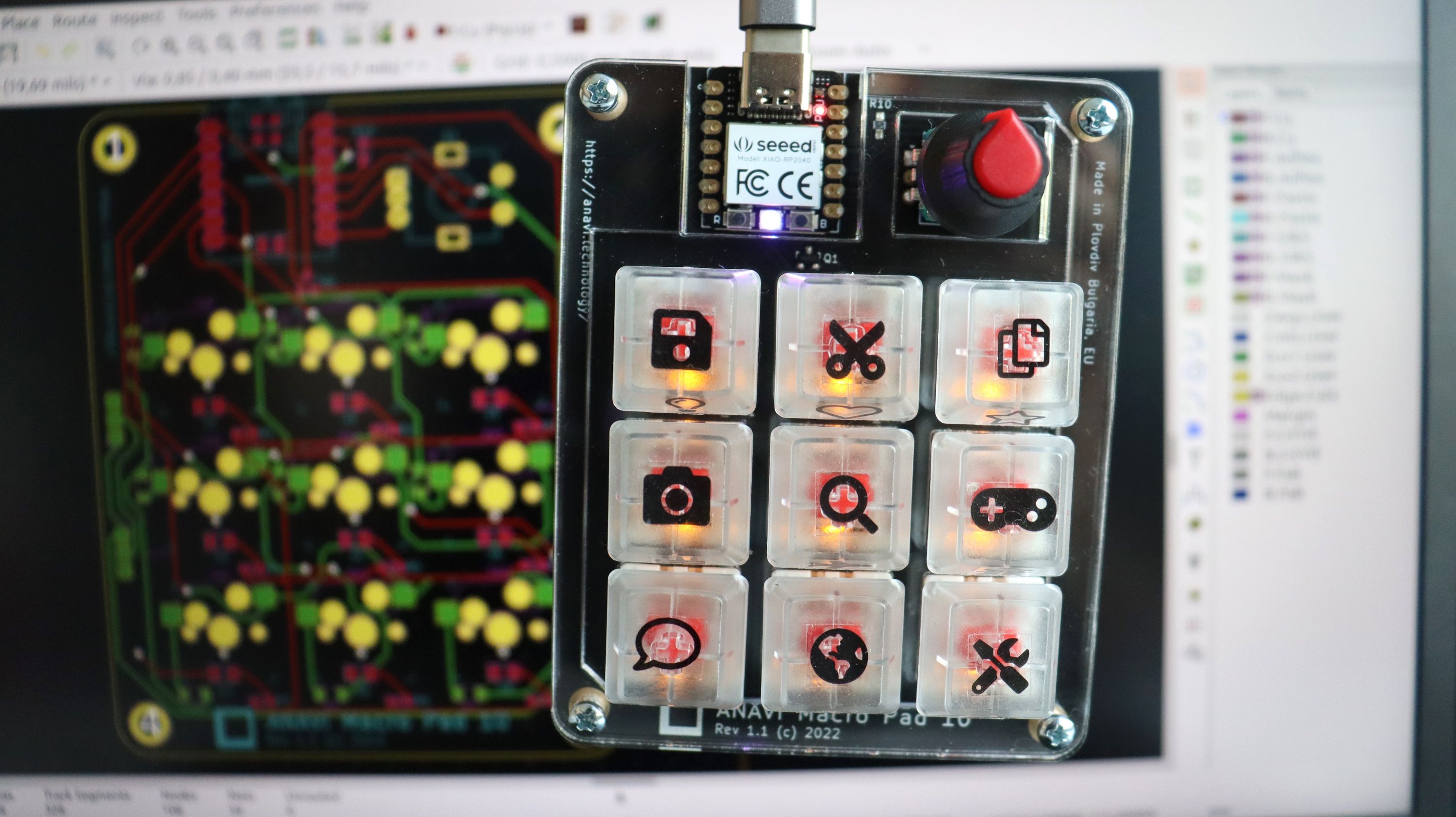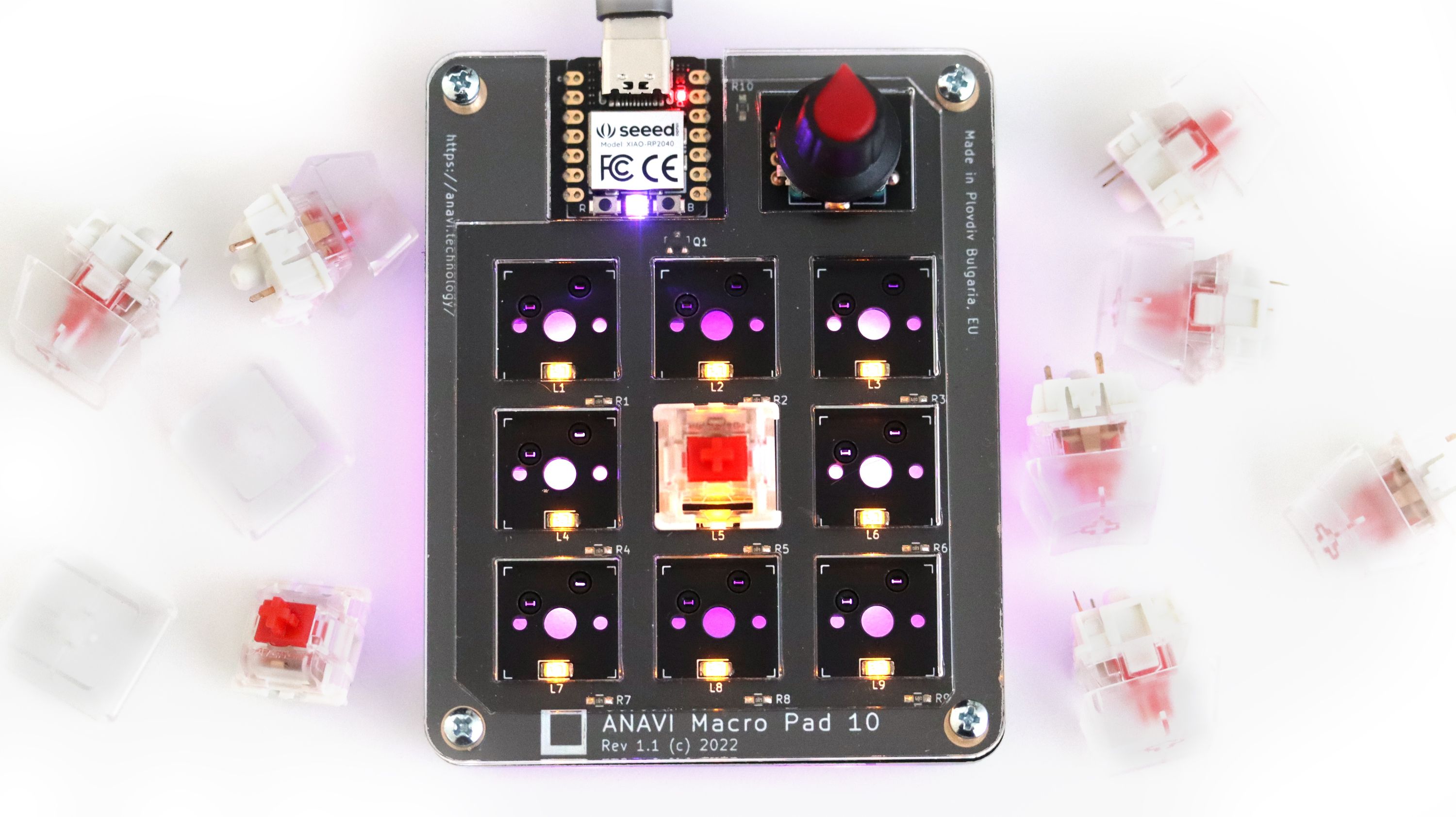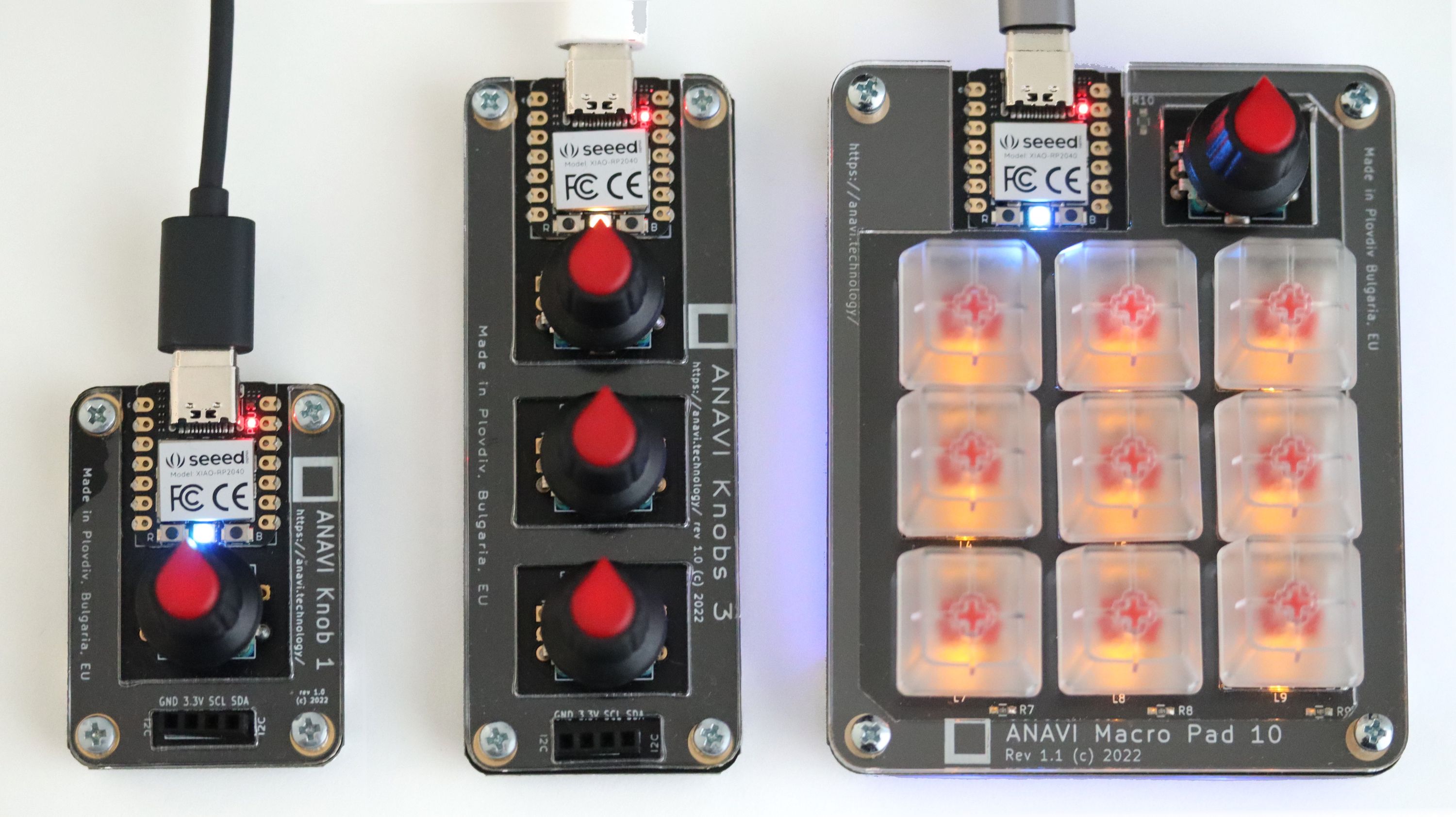The printed circuit boards for ANAVI Macro Pad 10, ANAVI Knobs 3 and ANAVI Knob 1 were all designed with KiCad. This is a free open source software suite for electronic design automation (EDA). It is written in C++ and works on MS Windows, Mac OS X, and GNU/Linux distributions. The majority of KiCad’s source code is available under GNU GPLv3 (or later) and third-party code included in KiCad is under GNU AGPLv3 (or later).
The initial release dates back to 1992, so this year KiCad turns 30. However, its popularity rapidly increased less than a decade ago. In 2013 CERN, the European Organization for Nuclear Research, started using and contributing to it. After that numerous companies switched to KiCad. Most notably Olimex, my open source hardware neighbors and friends in Plovdiv, Bulgaria. I was encouraged too so five years ago, after getting familiar with KiCad, I started designing printed circuit boards with it. The first open source hardware board that I designed in KiCad on my own was ANAVI Infrared pHAT in 2017, which was also crowdfunded through Crowd Supply.
The latest and greatest KiCad major version is Six. KiCad’s PCB editor can generate up to 32 layers of copper, 14 technical layers (silk screen, solder mask, component adhesive, solder paste and edge cuts) plus four auxiliary layers (drawings and comments). Although nowadays KiCad has enormous powers for designing very complex printed circuit boards, mechanical keyboards are relatively simple and two layers are more than enough.
Thank you for support ANAVI Macro Pad 10, ANAVI Knobs 3 and ANAVI Knob 1. As part of the stretch goals of this crowdfunding campaign, to recognize KiCad’s contribution to open source hardware, backers will receive a couple of stickers with its logo. Making open source hardware really makes sense if people have the freedom to study, use, and modify designs with free and open source software and KiCad is an excellent tool for the job!
Thanks,
Leon








